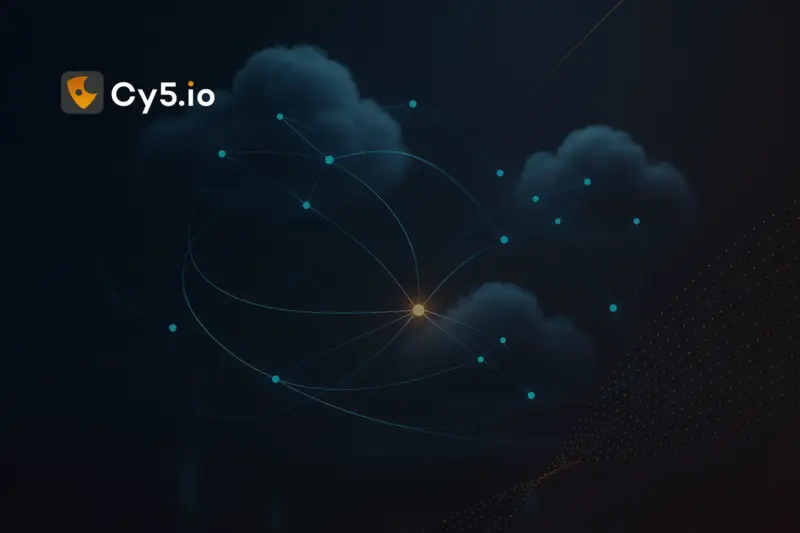Cloud security leaders searching for cspm tools want more than vendor lists—they need a way to match capabilities to today’s multi‑cloud reality. This guide compares cloud‑native, third‑party, and open‑source options, then gives you a decision matrix and a 90‑day rollout plan you can apply now. Research shows CSPM reduces misconfigurations and improves compliance when implemented with clear scope and automation, which is why adoption keeps rising across enterprises.
Key Takeaways
- There’s no universal “best cspm tools” shortlist—fit depends on cloud mix, compliance duty, team skills, and how far you’ll go with auto‑remediation.
- Cloud‑native CSPM is fastest to start and aligns well with each provider’s controls; third‑party platforms win on unified policy and risk correlation; open‑source shines for customization and cost control (with higher engineering time).
- Align policies to frameworks like CIS and NIST CSF early to cut noise and speed audits.
- Expect “alert fatigue” unless you tune rules to your identities, accounts/projects, and IaC baselines. (The Challenges of CSPM diagram on p.2 highlights this.)
- Use the decision matrix below to choose, then execute the 90‑day plan to operationalize.
Why CSPM Tooling is Not One‑Size‑Fits‑All (Multi‑Cloud Realities)
Cloud posture spans IaaS (compute, storage, networking), PaaS services, containers/Kubernetes, and—most critically—identities and permissions. Requirements diverge by:
- Scale & asset churn: more accounts/projects, more ephemeral resources, more drift to track.
- Compliance scope: regulated workloads (PCI DSS, HIPAA, GDPR) drive prescriptive control sets and audit evidence. Aligning to recognized frameworks like NIST CSF and CIS Benchmarks reduces risk and speeds audits.
- Automation appetite: whether you’ll enforce guardrails and auto‑remediate beyond “reporting.” Research shows automation materially reduces incidents and misconfigurations.
- Team skills: how comfortable your team is with policy‑as‑code, cloud provider services, and tuning rules.
Typical Triggers to Revisit CSPM
- Entering a new compliance regime (e.g., SOC 2, ISO 27001) or adding regulated data
- M&A, divestiture, or onboarding a second cloud provider
- Moving to platform engineering / golden‑path guardrails
- A noisy or stagnant CSPM deployment that lost stakeholder trust
- Expanding Kubernetes and serverless use across lines of business
TL;DR
- Built‑in CSPM: Best when you’re single‑cloud or want the fastest path to baseline coverage in that cloud.
- Third‑party CSPM: Best when you need unified policy, multi‑cloud governance, and risk correlation across IaaS/PaaS/K8s.
- Open‑source CSPM: Best when you value auditability and customization, and can invest engineering time to integrate and maintain.
Option 1: Cloud‑native CSPM (pros/cons, fit, cost, lock‑in)
Tools: AWS Config + Security Hub, Microsoft Defender for Cloud, Google Cloud Security Command Center (SCC)
Capability Comparison (High‑Level)
| Tool | Primary scope | Policy/benchmarks | Threat findings | Auto‑remediation | Multi‑cloud reach | Pricing model | Lock‑in notes |
|---|---|---|---|---|---|---|---|
| AWS Config (+ Security Hub) | Deep AWS resource config history; posture & findings in Security Hub | CIS/AWS Foundational best practices via Security Hub standards | Aggregates AWS detectors (e.g., GuardDuty) and partner findings | Remediation with SSM Automation, Lambda, CloudWatch Events | AWS‑centric | Per‑rule evals, per‑finding (varies by service) | Tightest integration with AWS services and IAM models |
| Microsoft Defender for Cloud | Azure posture & workloads; connectors for AWS/GCP | Built‑in policies mapped to CIS, NIST, more | Native threat protection across compute, data, and identities | Azure Policy, Logic Apps, Functions | Azure‑first, expands via multi‑cloud connectors | Per‑resource coverage tiers | Policy engine and remediation live within Azure |
| Google Cloud SCC | GCP org/project visibility, asset inventory, findings | CIS GCP, Google best practices | Findings from services like Cloud Armor, Event Threat Detection | Cloud Functions, Cloud Run, SCC Security Health Analytics + workflows | GCP‑centric (some hybrid connectors) | Per‑asset tiered | Strongest ROI in GCP‑heavy estates |
Notes: AWS Config provides configuration change tracking and compliance checks and integrates tightly with Security Hub; Defender for Cloud extends posture and threat protections and offers multi‑cloud connectors; SCC unifies GCP asset visibility and misconfiguration analytics—each strongest in its home cloud.
Best fit when…
- You’re mostly single‑cloud and want quick wins aligned to that provider’s services
- You prefer native policy engines (AWS Config rules/Azure Policy/Google’s SCC analytics)
- You need low‑friction integrations with cloud consoles, IAM, and ticketing
Watch‑outs
- Cross‑cloud governance is limited compared to third‑party platforms
- Pricing can become opaque across multiple native services
- Rules may be verbose/noisy until tuned to your identities and account/project boundaries (alert fatigue is a common challenge).
How to Compare CSPM Tools Quickly
Check depth of resource coverage in your dominant cloud, policy mapping to frameworks you audit against, and what “auto‑remediation” really means (event‑driven scripts vs policy‑enforced changes).
Option 2: Third‑party CSPM (pros/cons, breadth, multi‑cloud governance)
Tools: ion Cloud Security
What you get:
- Breadth across clouds + K8s + IaC: One policy model, cross‑cloud asset graph, and IaC scanning to push controls left.
- Unified risk correlation: Enriches misconfigs with identity reach, network paths, and exploitability to prioritize what matters.
- Integrations: DevOps/ticketing (e.g., Jira, ServiceNow), chatops, SIEM, and workflow automation—key to actionability.
- Trade‑offs: Additional cost and platform complexity; you still need role design, rule tuning, and change management.
Strengths vs Built‑ins
- Multi‑cloud normalization, common control language, and one place to manage exceptions
- Cross‑plane risk context (e.g., public bucket + exposed key + reachable from internet)
Strengths vs Open‑source
- Content updates, support, and enterprise workflow integrations out‑of‑the‑box
- Lower engineering lift to maintain hundreds of controls across changing cloud APIs
Empirical studies show automation and unified monitoring reduce incidents and misconfigurations; the biggest barriers to value are integration complexity and organizational resistance—issues third‑party platforms help address with connectors and workflows.
Option 3: Open‑Source Stack
Tools: Cloud Custodian, Prowler, ScoutSuite
Open‑source CSPM lets you audit and enforce policies as code, see exactly what rules do, and avoid license fees. Hidden costs include engineering time for pipelines, storage/SIEM, and curation of control content. (Academic and industry overviews consistently note both the benefits and the upkeep burden.)
Open‑Source Mini‑Matrix
| Project | Primary clouds | What it does best | Setup effort | Ongoing upkeep | Best for teams that… |
|---|---|---|---|---|---|
| Cloud Custodian | AWS/Azure/GCP | Policy‑as‑code with rich filters/actions; scheduled/real‑time enforcement | Medium | Medium–High (rules + runners) | Want enforcement + cleanup automation in code repos |
| Prowler | AWS/Azure/GCP | Benchmarks & compliance checks (CIS, etc.); fast audits | Low–Medium | Medium (rule updates, reports) | Need recurring audits and CSV/HTML reporting |
| ScoutSuite | AWS/Azure/GCP | Agentless posture assessment; clear findings reports | Low | Medium | Want ad‑hoc assessments and human‑readable outputs |
Best Open Source CSPM Stack: Where to Start
Start with Prowler for quick baseline audits, add ScoutSuite for deeper assessments, and adopt Cloud Custodian for targeted enforcement and cleanup jobs. A mixed approach gives speed and guardrails without locking you in.
Reality check: In one academic survey, teams validated open‑source CSPM in simulated multi‑cloud tests (e.g., Cloud Custodian) but highlighted the engineering work to achieve automated fixes and ongoing rule maintenance—plan for it. That’s where Cy5’s CSPM tool comes into play. Their ion Cloud Security platform provides customized engineering approach for posture monitoring.
Decision Matrix: Platform Size, Compliance Drivers, Team Skill, Auto‑Remediation Depth
| Criteria | Cloud‑native | Third‑party | Open‑source |
|---|---|---|---|
| Cloud mix | Best — strongest in single‑cloud estates | Best — unified policy for multi‑cloud | OK — flexible, but you build the glue |
| Asset count | Good — scales in‑cloud | Best — scales across estates with correlation | OK — scales, but ops overhead rises |
| Compliance scope | Good — native mappings | Best — broad frameworks + evidence workflows | OK — customizable, more DIY |
| Automation depth | Good — event/policy actions | Best — richer workflows & ticketing | Good — powerful if you engineer it |
| Team skills | Best — cloud admin skills suffice | Good — platform admin + security eng | Risky — needs policy‑as‑code + pipelines |
| Procurement | Best — already in your cloud | OK — new vendor, new process | Best — no license, but staff time |
Rationale: Choose the column that wins most rows for your situation. If you’re multi‑cloud with audits and limited engineering time, third‑party often wins; if you’re single‑cloud or piloting, cloud‑native is fastest; if you have platform‑engineering muscle and want code‑level control, open‑source is viable.
Example Buyer Scenarios
- High‑growth SaaS on one cloud, SOC 2 in 6 months. Start cloud‑native for fast coverage and evidence; add targeted auto‑remediation on the top 10 misconfigs. Reassess at multi‑cloud.
- Enterprise with AWS + Azure + GCP, thousands of accounts/projects, multiple frameworks. Third‑party CSPM for unified policy, identity context, and compliance reporting at scale; integrate with ticketing/ChatOps to drive closure.
- Platform team with strong DevOps culture, moderate compliance, tight budgets. Open‑source stack (Prowler/ScoutSuite/Custodian) managed via CI; invest in a small “rules guild” and central dashboards.
Implementation Pitfalls (identity scope, noisy rules, multi‑cloud drift) + 90‑Day Rollout Plan
Common Pitfalls
- Over‑scoped IAM read roles for CSPM—grant least privilege and segment per account/project.
- Duplicate/noisy findings across detectors and policy engines—consolidate and de‑dupe. (The Challenges figure on p.2 calls out alert fatigue.)
- Unmanaged accounts/projects outside org hierarchy—inventory first, then enroll.
- IaC vs runtime drift—teams fix code, but runtime drift reappears; enforce guardrails and drift detection.
- Ticket fatigue—no remediation ownership or SLAs leads to backlog.
90‑Day Rollout Plan
- Days 0–30: Inventory & baselines (“turn on, tune down”)
- Discover all accounts/projects/subscriptions; map to business owners.
- Enable CSPM (chosen option) in read‑only; baseline against CIS and NIST CSF controls.
- Suppress duplicative/low‑value rules; document exceptions with owners.
- Stand up weekly posture reviews; publish top‑10 misconfigs by blast radius.
- Days 31–60: Prioritize & integrate
- Prioritize misconfigs affecting identities, network exposure, and data stores.
- Integrate with ticketing and ChatOps; set SLAs for P1/P2 findings.
- Pilot auto‑remediation for 2–3 controls (e.g., public storage, overly permissive IAM, open SGs) in non‑prod, then prod behind approvals.
- Days 61–90: Expand & institutionalize
- Expand policies across all clouds and org units; add IaC checks in CI to stop regressions.
- Produce compliance reports mapped to required frameworks; finalize OKRs and control owners.
- Establish a monthly “tune‑the‑rules” cycle and quarterly posture reviews.
Why this matters
Whichever path you choose, you’ll get the most value when posture, identity, and runtime insights live in one flow—so you can cut noise and maintain continuous compliance. The ion Cloud Security Platform brings agentless visibility and context‑rich analytics to help teams prioritize and automate safely. Explore the Cy5 Cloud Security Platform or learn more about Cloud Security.
Cy5 Value: Security Observability + Continuous Compliance
Cy5 helps teams operationalize whichever path you choose with agentless visibility and context‑rich analytics that cut noise and accelerate decisions—bringing posture, detection, and compliance into one flow. Explore the Cy5 Cloud Security Platform and our outcomes‑focused approach to Cloud Security.
FAQs: CSPM Tool in 2025
No. Fit depends on cloud mix, compliance scope, team skills, and how far you’ll automate. Studies show CSPM is effective when tuned to your environment and mapped to recognized frameworks. Cy5’s ion Cloud Security platform comes most close in providing you with the right approach and measure to map such frameworks and cloud environment.
Use AWS Config (with Security Hub) when you’re primarily on AWS and want deep native integration and quick enablement. Choose Prisma Cloud for multi‑cloud governance, unified policies, richer risk correlation, and integrations across DevOps tooling.
SCC is strongest for GCP org‑level visibility and findings; Defender for Cloud is compelling if you’re Azure‑first and want connectors across AWS/GCP with a single policy engine. Evaluate based on your dominant cloud and required connectors.
There’s no single winner. A pragmatic stack is Prowler for fast audits, ScoutSuite for assessments, and Cloud Custodian for enforcement/cleanup—owned by a small platform team and wired into CI.
Conclusion
If you’re single‑cloud or piloting, start native to get coverage fast. If you’re multi‑cloud with audits and need unified risk context, go third‑party. If you have platform‑engineering bandwidth and want code‑level control, open‑source works—plan for upkeep. Cy5 helps you operationalize any choice with agentless visibility, context‑aware analytics, and continuous drift control.
Notes & supporting research
- Aligning CSPM to frameworks like NIST CSF and industry benchmarks reduces risk and supports compliance evidence.
- Typical CSPM features and challenges (including alert fatigue) are summarized in recent academic surveys; see figures on p.2 for challenges and p.2–3 for feature trends.
- Empirical studies report high CSPM adoption with measurable reductions in incidents and misconfigurations when automation is applied.
- Cy5’s platform emphasizes agentless visibility, context‑rich analytics, and continuous compliance—useful regardless of which CSPM path you choose.





